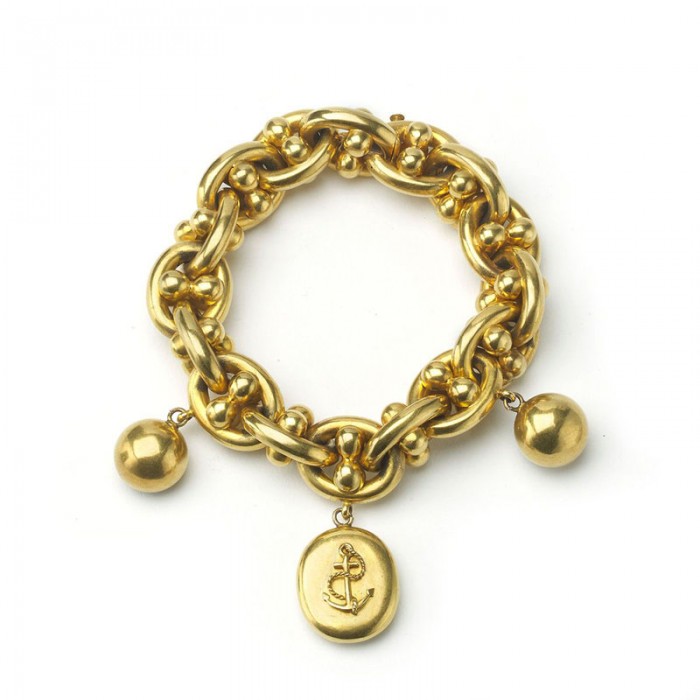
Early 20th Century Pearl Diamond and Platinum...
An early twentieth century natural pearl diamond and platinum bracelet, in a transition between Edwardian and Art Deco styles, with an articulated...






A Victorian, fancy oval link nautical gold bracelet, with an oval locket charm, containing a tinted collodion positive or ambrotype glass photograph of a gentlemen in Victorian dress, the reverse bearing an embossed anchor with entwined rope, with two further ball-shaped locket charms set either side. With hidden box and tongue clasp. Circa 1865.
Collodion positive or ambrotype photographs first appeared about 1853. The method was a variant of the wet plate collodian process, based on the collodian negative process, invented by Frederick Scott Archer. It produced an underexposed glass negative, which was reversed by bleaching the silver salts with nitric acid or bichloride of mercury. The dark areas which would normally form the highlights in a printed image turned pale and the clear areas which would form the shadows in print appeared to be dark. When held up to the light the image still looked like a negative but placed against a dark backing material and viewed in reflected light a positive image was produced. Each image is unique and could only be duplicated by using a camera to take a photograph. The emulsions used were too thin to make satisfactory prints.
Although collodian positives, which are in fact negatives, are commonly called "ambrotypes" this is technically incorrect. The ambrotype process was a particular variant of the process, which used Canada balsam to seal the collodion plate, to cover the glass. This technique was patented by American photographer James Ambrose Cutting, in 1854. Examples of ambrotype photographs are most commonly found in America. Collodian positive is the term more correctly used for British glass plate photographs.
The portrait of the gentleman in our bracelet has been hand-coloured to make the image look more realistic. This would have involved extra cost. There are many examples of hand coloured collodian positive glass plate photographs.
Collodion positive superseded daguerreotype photographs and in turn fell out of favour firstly when tintype photographs were introduced, then when cartes de visite and other paper print photographs became easily available. Paper photographs could be produced in multiple copies. The studio photographers had largely stopped using the process by the 1860s but it remained popular with itinerant open-air photographers until the 1880s, because portraits could be made while the sitters waited.
With thanks to the Science Museum Website
Data sheet
Here you can add custom original content(text, images, videos and more) for each product page.